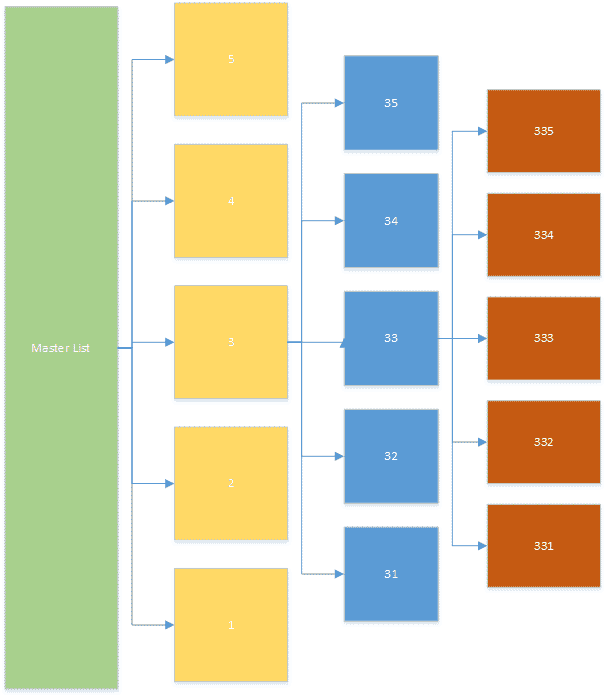Marketing
Effective Email Marketing Strategies: RFM Segmentation
March 20, 2017

As your email list grows with new prospects and customers how do you segment the master list into more manageable groups addressing the different needs and requirements to drive sales further and boost ROI? One key strategy is the use of RFM segmentation in analyzing data and sending more focused communications.
A behavioral marketing segmentation technique, RFM stands for:
- Recency: When the customer last placed an order
- Frequency: How many orders the customer placed over a period of time
- Monetary: How much the customer spent
These three variables can tell us a great deal about customers and their buying habits. It relies on the fundamental premise that someone who recently bought something, who shopped often and who spent a lot is more likely to respond to your next campaign than someone who bought something a long time ago, shopped infrequently and spent next to nothing.
Coupled with customer lifetime value analysis, RFM enables ecommerce companies to significantly increase response rates by sending offers to focused subsets that are more likely to purchase. In the direct mail world, where every name comes with set production and shipping costs, there’s a strong motivation to pare lists down. As a result, classic direct marketers have used RFM for decades.
Misconceptions About Email Marketing
Email marketers haven’t always been as motivated because of two common misconceptions:
- Misconception 1: Email is cheap, so there’s no downside to blasting a message to everyone.
There’s actually a pretty big downside: list fatigue. Over time, as recipients receive multiple messages they don’t find relevant, they become less and less likely to respond, and more and more likely to report your messages as spam. And lists do have costs associated with both storage and sending driven by pure size of list. This, in turn, lowers your sender reputation score, the most important factor ISPs use in determining whether to filter your message to the junk folder instead of the inbox. The end result? A damaged brand (“Just what I need, another email from that company”) and deliverability issues that can prevent engaged recipients from receiving your messages. -
Misconception 2: The bigger the list, the bigger the response rate.
It seems logical, but it is just not true. Sending to an additional number of warm bodies does not necessarily generate a higher response rate. In fact, it can actually produce higher spam complaints. You are much more likely to increase response rates when you send relevant, targeted messages to smaller subsets of your lists.
How to Apply RFM Segmentation to Email Lists
Email marketing allows you to measure customer interaction and engagement in many more ways than direct mailing could ever do. Depending on your email database and marketing strategy, other metrics can be used in place of the traditional RFM parameters, giving you many different ways to analyze RFM segmentation:
- Recency: Date of the last purchase, date of the last email clickthrough, date of the last lead-generation conversion
- Frequency: Number of times each recipient purchased over a set period of time, number of times each recipient clicked over a set period of time, number of lead-generation conversions over a set period of time
- Monetary: Total amount spent over a set period of time, total estimated value based on factors like cost-per-lead and revenue-per-lead over a period of time, cumulative engagement score derived from different metrics over a set period of time
Once you’ve decided which metrics make the most sense for your business, you’ll need to tie your email database to the system that contains purchase or conversion history, such as your CRM or web analytics tool.
Now, You Are Ready to Perform RFM Segmentation
Because RFM segmentation has been a direct marketing staple for so many years, many popular data-mining and statistical analysis tools generate ready-made RFM-classification reports. However, if you don’t use statistical analysis tools, fear not. Unlike predictive modeling techniques, RFM segmentation is based on past customer results and does not require heavy data analysis.
One way to perform RFM segmentation is to simply sort your list for recency, in order of highest to lowest. You then divide the list into five equal segments, giving the top 20% a recency score of 5, the next 20% a score of 4, and so on. Each recency segment is then sorted for frequency and divided into five equal segments, resulting in 25 recency-plus-frequency segments. Each of these segments is then sorted for monetary and divided into five equal segments, leaving you with 125 segments that have RFM scores ranging from 555 to 111.

Of course, depending on the size of your database, you could divide it into deciles or other n-tiles, instead of quintiles. Or if you are very familiar with your database, you could simply use intuitive groupings, such as “purchased in last month, last three months, last six months or greater than six months” as the basis for your RFM classifications. As you can see, RFM is very adaptable, and with some experimentation, you will be able to obtain dramatic lift gains.
Sending Different Types of Email Campaigns to Different RFM Segments
Once you’ve assigned all of the records in your database a specific RFM classification, you run a test campaign, typically on 10 percent of your list, to determine which RFM groups to mail to.
In traditional direct mail, you perform a break-even analysis to determine which mailing recipients are profitable. You look at the test-group response rate for each RFM cell, and then stop mailing to cells whose response rates are less than the rate required to break even on mailing costs.
In email, however, the goal is not to simply stop mailing to your weakest segments. It’s to find the right tactics that resonate with and re-engage lower-scoring recipients, too. So you can test different types of messages to see which RFM segments respond best to which types of campaigns, and stop sending those particular campaign types to segments that fail the breakeven test.
Or, instead of using the breakeven metric, you could simply compare the conversion rates of different RFM segments and send future campaigns only to the groups who convert the best.
Here are some ideas for the types of campaigns that may work best with different RFM segments:
- High Recency, High Frequency and High Monetary: Reward your most loyal customers and prospects with exclusive email privileges that make them feel special. For example, some retailers automatically offer free shipping and other perks to their best online customers.
- High Recency, Low Frequency and Low Monetary: This segment includes your newest customers or subscribers. Give them a good first impression of your company with welcome offers, product-usage tips or other information that newbies would find helpful.
- Low Recency, Low Frequency and Low Monetary: As in direct marketing, your least-engaged recipients simply may not be worth mailing to. But in email marketing, they may be great candidates for a re-opt-in campaign. Double-check whether they still want to hear from you, and remove them from your list if they don’t.
Use RFM to Send Better Messages to Your Best Email Recipients
RFM segmentation is a relatively simple way to break down your email list based on recipients’ past behaviors. Use this strategic approach to segmentation to increase response rates and convert more prospects into happy customers.
Alastair Dodwell is the founder of Taybridge Consulting.
The State of Brand Loyalty in the U.S. in 2023
Related



